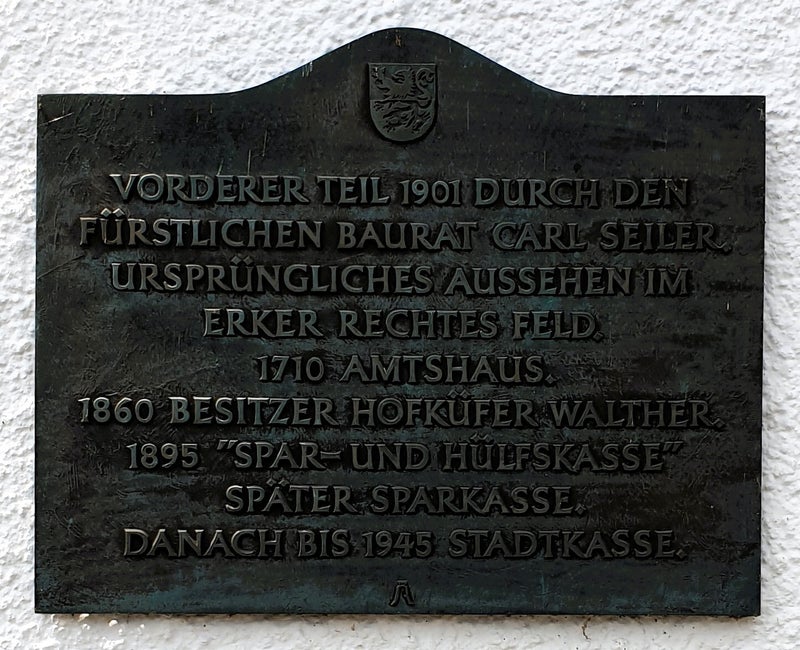Schütt 5, Braunfels
The architectural brilliance of Carl Seiler comes to life through his remarkable works, especially the house at Schütt 5 in Braunfels, Germany. He integrated the rich and elaborate decorative elements of the Neo-Renaissance with the structural method of traditional half-timbering in the facade.

The Neo-Renaissance is a 19th-century architectural revival style that drew its inspiration from the classic Italian Renaissance. It is characterized by symmetry, order, proportion, and geometric figures.
Neo-renaissance houses and buildings often feature cornices, pediments, balustrades, bay windows, and oriel towers.
Built in 1901 as a residence and municipal office for Ernst Henrich and his wife, Elise, this three-story house with half-timbered upper floors showcases those features mentioned above.
oriel window
The multi-level oriel window in the corner elevates the vertical appearance of the house.
An oriel window is a type of bay window that protrudes from the upper story wall and does not reach the ground. Oftentimes, an oriel window rests on a corbel. A corbel is a bracket made of wood, stone, or metal.
The term 'oriel' is derived from the Latin word 'oriolum', which means gallery or porch. An oriel window could have originated from an early design of a porch.
All the levels of the oriel window are distinct from one another. Some of the decorations are saltires, also known as St. Andrew's crosses, and fire bucks. A St. Andrew's cross is made up of two intersecting struts that form an X-shape. In contrast, a fire buck consists of curved struts decorated with a nose and eyes.
box bay window
The box bay window is just as impressive as the multi-level oriel window.
A box bay window is a variation of the traditional bay window, defined by its rectangular shape. It consists of a central window flanked by side windows positioned at 90-degree angles, thus creating a box-like structure that projects from the wall. This design contrasts with a traditional bay window, which has angled sides that form a curve or polygonal shape.
Vase-shaped columns called balusters gracefully line up on the wall parapet on the third floor of the house.
The term 'baluster' originated from the Italian word 'balaustra', which means a wild pomegranate flower. A baluster is named after this flower because of its similarity to a pomegranate flower that is half-opened. A half-opened pomegranate flower has a rounded base and a slender upper section.
Braunfels Tourist Information
Website:
E-Mail Address:
Address:
Telephone Number:
Take a look at my Instagram page for more updates about German architecture.
If you like my posts on German architecture, please share them with your family and friends.















Add comment
Comments
Beautiful! Amen! Render unto Ceasar what's Ceaser and unto God, what's God.